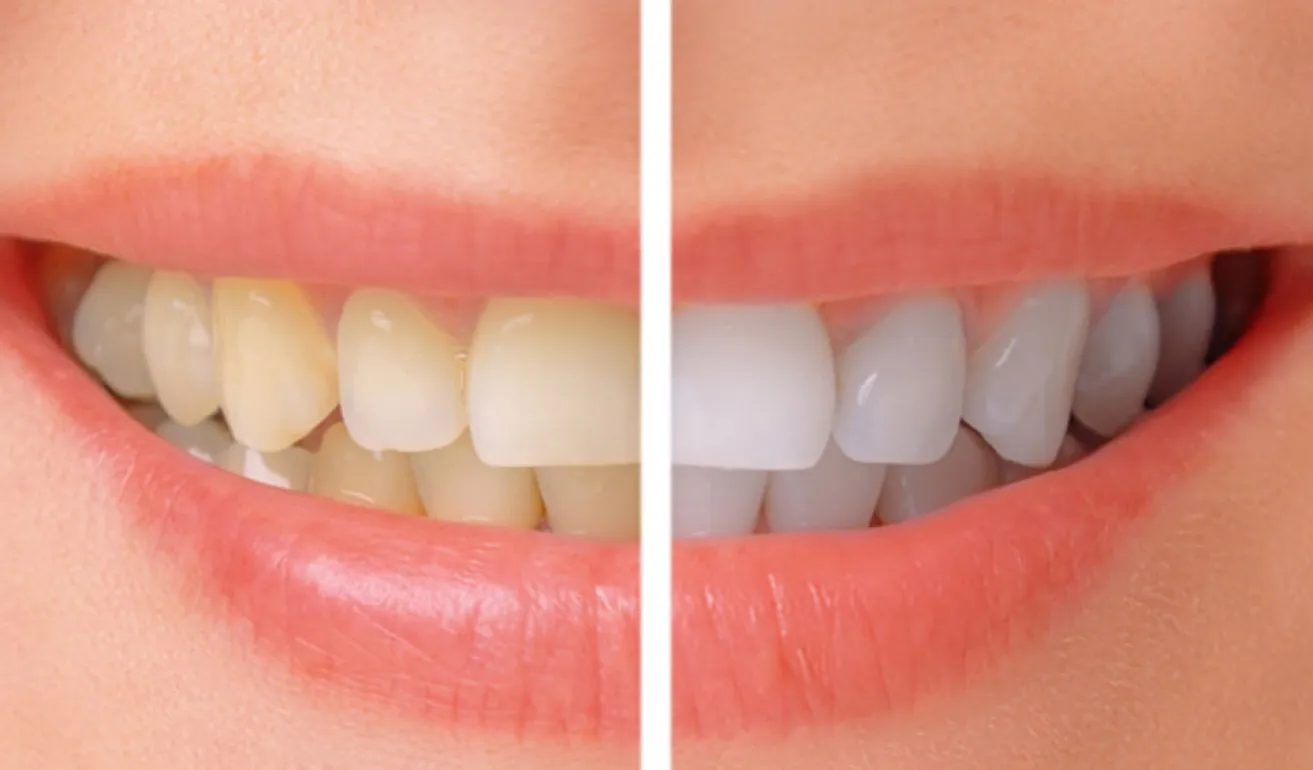What is Teeth Whitening?
Teeth whitening, also known as teeth bleaching, is a popular cosmetic dental procedure designed to lighten the shade of your teeth. This process involves using bleaching agents to remove stains and discoloration, resulting in a brighter and more aesthetically pleasing smile. Teeth whitening treatments are available in various forms, including professional treatments performed by dentists, and over-the-counter products like whitening strips, toothpastes, and gels. The effectiveness of each method varies depending on the concentration of the bleaching agent and the type of stains being treated. It’s crucial to understand how these methods work and what potential risks are involved to make informed decisions about your dental care. The goal is to enhance your smile, but it’s important to be aware of the potential downsides before starting any whitening treatment.
How Teeth Whitening Works
Teeth whitening typically works by using bleaching agents, most commonly hydrogen peroxide or carbamide peroxide. These chemicals penetrate the enamel of the teeth and break down the stain molecules that cause discoloration. When applied, the peroxide releases oxygen molecules that react with the stain particles, breaking them into smaller, less visible pieces. Professional treatments usually use higher concentrations of peroxide, leading to faster and more dramatic results. Over-the-counter products have lower concentrations, making them safer for home use but potentially less effective. The process varies depending on the method, but the core principle remains the same: removing stain molecules to reveal a brighter, whiter smile. Understanding this mechanism helps in appreciating the potential benefits and risks associated with the procedure.
Risk 1 Sensitivity and Discomfort
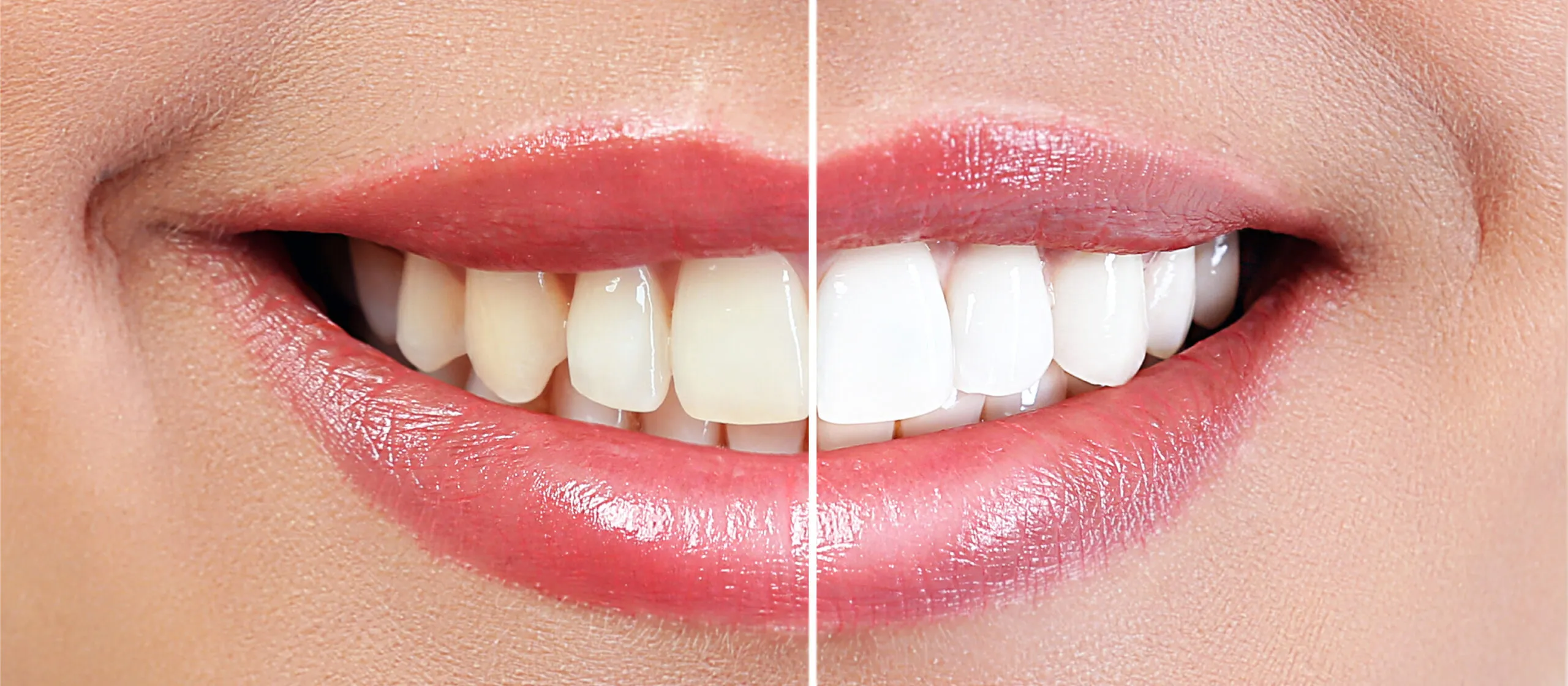
One of the most common side effects of teeth whitening is tooth sensitivity and discomfort. This often manifests as a sharp, temporary pain or discomfort when consuming hot, cold, sweet, or acidic foods and drinks. The bleaching agents used in whitening can penetrate the enamel and reach the dentin, a layer containing tiny tubules that lead to the nerves in the teeth. This can cause irritation and increased sensitivity. The severity of the sensitivity varies from person to person and also depends on the concentration of the bleaching agent, the duration of the treatment, and the individual’s existing dental health. In most cases, this sensitivity is temporary and resolves shortly after the treatment. However, it’s important to take precautions to manage and alleviate the discomfort.
Causes of Sensitivity
The sensitivity caused by teeth whitening is primarily due to the chemical action of the bleaching agents. As these agents break down stains, they can also affect the outer layer of the tooth, the enamel, and potentially irritate the nerves within. The higher the concentration of the bleaching agent, the greater the potential for sensitivity. Furthermore, individuals with pre-existing conditions, such as receding gums, thin enamel, or small cracks in their teeth, are more likely to experience increased sensitivity. The process opens the pores in the enamel, allowing the chemicals to reach the nerves more easily. Using products for extended periods can also increase the risk of sensitivity. Understanding these causes allows you to take necessary steps to reduce and manage the discomfort experienced during whitening.
Managing Tooth Sensitivity
Several strategies can help manage tooth sensitivity during and after teeth whitening. Using a toothpaste designed for sensitive teeth, which contains ingredients like potassium nitrate, can help block the tubules in the dentin and reduce nerve sensitivity. Avoiding extremely hot or cold foods and beverages during the whitening process can also minimize discomfort. Applying fluoride treatments, either at home or in your dentist’s office, can strengthen the enamel and reduce sensitivity. If sensitivity persists or becomes severe, it’s important to consult your dentist. They may recommend adjusting the whitening treatment or using a desensitizing agent. Proper oral hygiene, including gentle brushing and flossing, is crucial to protect the teeth during and after the whitening process.
Risk 2 Enamel Erosion and Damage

Excessive or improper use of teeth whitening products can potentially lead to enamel erosion and damage. Enamel, the hard outer layer of the tooth, is the first line of defense against decay and sensitivity. Overexposure to strong bleaching agents can weaken the enamel, making the teeth more susceptible to cavities and damage. This is particularly concerning when high-concentration products are used for extended periods or without professional guidance. The process can strip away minerals from the enamel, making the teeth more porous and vulnerable. While professional treatments are generally safe when administered correctly, the risk of enamel damage is a significant factor in considering any teeth whitening procedure, and should be evaluated by a dental professional.
Understanding Enamel and Its Importance
Enamel is the hardest substance in the human body, primarily composed of minerals like calcium and phosphate. It protects the underlying dentin and pulp from damage, temperature changes, and bacterial infections. The enamel’s strength is essential for chewing, biting, and maintaining overall oral health. Its smooth surface also helps prevent the build-up of plaque and bacteria. Maintaining healthy enamel is crucial for preventing tooth decay, sensitivity, and other dental problems. The strength and integrity of the enamel affect the overall health of the teeth, making it essential to protect it from erosion and damage. Understanding the importance of enamel is key to making informed decisions about teeth whitening procedures.
How Whitening Affects Enamel
Teeth whitening products can affect enamel in several ways. The bleaching agents, typically hydrogen peroxide or carbamide peroxide, work by penetrating the enamel to break down stain molecules. This process can also lead to the removal of some minerals from the enamel, a process known as demineralization. Repeated or excessive use of these products can weaken the enamel, making it more porous and vulnerable. This demineralization can cause increased sensitivity and a higher risk of cavities. The impact on enamel varies based on the concentration of the bleaching agent, the duration of the treatment, and the individual’s oral health. It is therefore essential to follow the recommended instructions for use and to consult with a dentist to prevent potential damage.
Preventing Enamel Damage
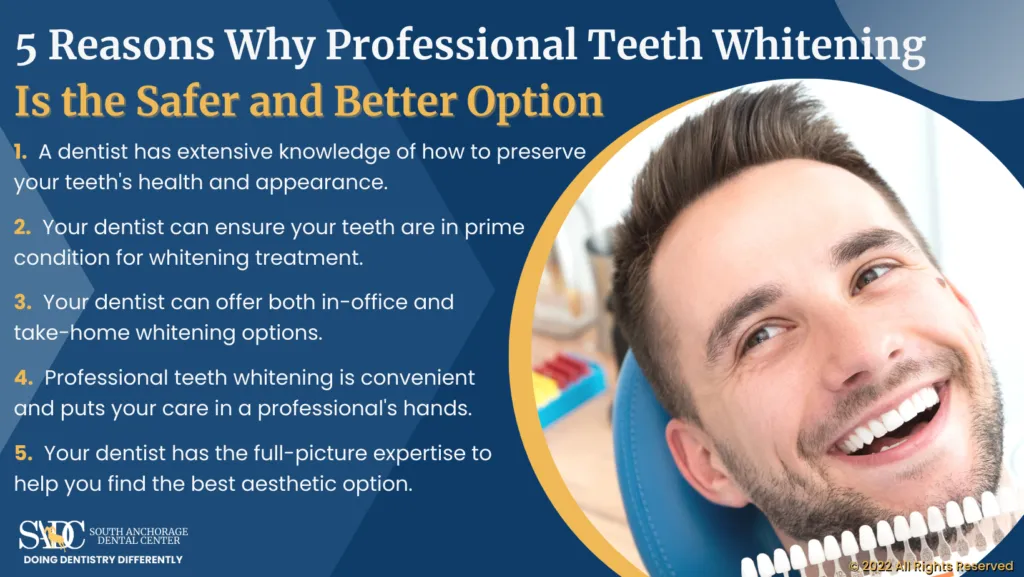
Several strategies can help prevent enamel damage during teeth whitening. Limiting the frequency and duration of whitening treatments is crucial. Using products with lower concentrations of bleaching agents can reduce the risk of enamel erosion. Applying a remineralizing toothpaste containing fluoride can help strengthen enamel by replenishing lost minerals. Consulting with a dentist before starting any whitening treatment is also essential. They can assess your oral health and provide personalized recommendations. Proper oral hygiene practices, including regular brushing, flossing, and professional cleanings, are essential for maintaining healthy enamel. Following these preventative measures can help maintain both the brightness of your smile and the health of your teeth.
Risk 3 Gum Irritation and Inflammation
Gum irritation and inflammation are potential side effects of teeth whitening, particularly with products that are not properly applied or used. The bleaching agents can come into contact with the gum tissues, causing irritation, redness, and sometimes even blistering. This is more common with at-home whitening kits where the trays might not fit perfectly, allowing the bleaching agent to leak onto the gums. Additionally, individuals with pre-existing gum conditions, such as gingivitis or periodontitis, may be more susceptible to these issues. Severe gum irritation can lead to significant discomfort and potentially increase the risk of infection. Proper application techniques and professional guidance are vital to minimize this risk and ensure a safe and comfortable whitening experience.
Causes of Gum Irritation
Gum irritation during teeth whitening is primarily caused by the bleaching agents, which can be harsh on the delicate gum tissues. If the whitening product comes into contact with the gums, it can lead to inflammation and irritation. This is often due to poorly fitting trays, which allow the bleaching agent to leak out and come into contact with the gums. Using excessive amounts of the product or leaving the product on the teeth for too long can also contribute to this problem. Certain individuals with sensitive gums or pre-existing gum disease are more likely to experience irritation. Proper application techniques, including careful tray fitting and using the recommended amount of product, are essential to prevent or minimize gum irritation.
Treating and Preventing Gum Problems
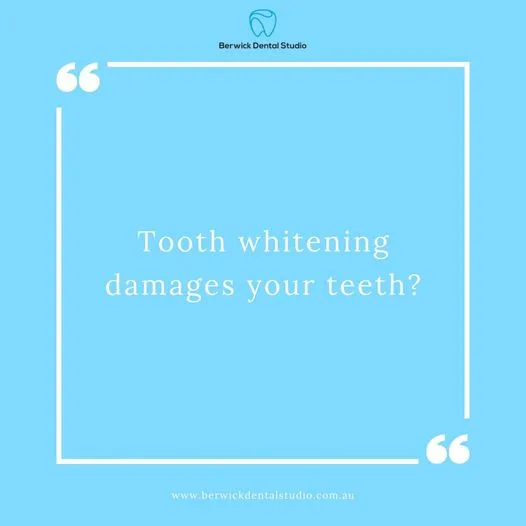
Preventing gum problems during teeth whitening involves several strategies. Ensuring the whitening trays fit properly and do not overflow onto the gums is crucial. Using a small amount of the bleaching agent and following the recommended treatment time will help minimize gum exposure. If irritation occurs, rinsing the mouth thoroughly with water can help remove the bleaching agent. Applying a soothing gel or ointment specifically designed for irritated gums can provide relief. Avoiding whitening treatments until the gums have healed is also essential. Consulting with a dentist is vital if gum irritation persists or becomes severe. They may recommend alternative whitening methods or treatments to reduce the risk of gum problems.
Risk 4 Allergic Reactions and Chemical Burns
Although rare, allergic reactions and chemical burns are potential risks associated with teeth whitening. Some individuals may be allergic to the ingredients in whitening products, leading to symptoms such as swelling, itching, or hives. Chemical burns can occur if the bleaching agent comes into contact with the soft tissues of the mouth for an extended period or in high concentrations. These burns can cause pain, blistering, and tissue damage. These reactions are more likely to occur with improper use of over-the-counter products or if professional instructions are not followed. It is essential to be aware of these risks and to seek immediate medical attention if any adverse reactions occur during or after the whitening procedure.
Identifying Allergic Reactions
Identifying allergic reactions to teeth whitening products involves recognizing specific symptoms. These symptoms may include swelling of the lips, tongue, or throat, which can be a sign of a serious allergic reaction. Skin rashes, hives, or itching around the mouth or face are also common signs. Difficulty breathing or swallowing is another serious symptom that requires immediate medical attention. If any of these symptoms appear during or after a whitening treatment, it is essential to stop using the product immediately and seek medical advice. Knowing the symptoms of an allergic reaction allows for quick action, which can prevent severe health complications and ensure a safe whitening experience.
How to Respond to Chemical Burns
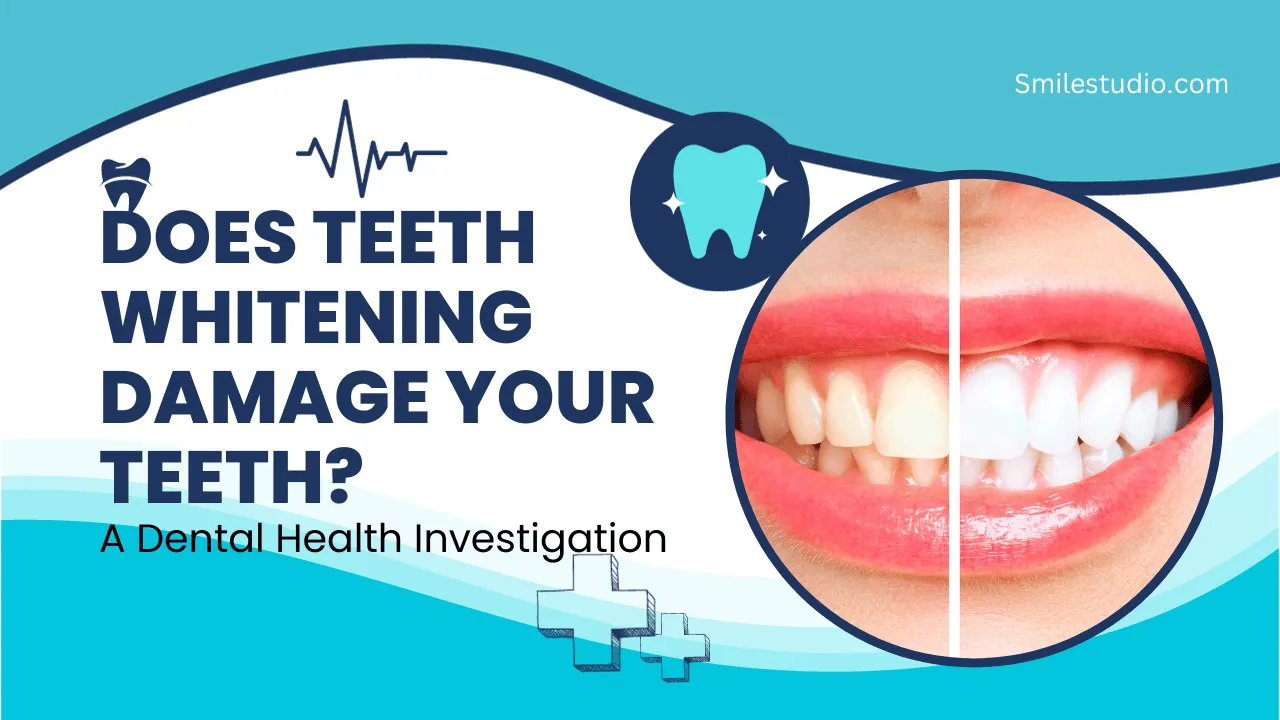
Responding to chemical burns from teeth whitening requires immediate action. If the bleaching agent comes into contact with the gums or other soft tissues, rinse the affected area thoroughly with water for several minutes to dilute the chemical and reduce damage. Apply a cold compress to the affected area to relieve pain and reduce swelling. Avoid touching or rubbing the affected area to prevent further irritation. Over-the-counter pain relievers can help manage discomfort. If the burn is severe, with blistering or significant tissue damage, seek immediate medical attention or consult with your dentist. It is important to follow the dentist’s instructions carefully to ensure proper healing and prevent complications. Prompt and proper treatment is crucial for minimizing the effects of chemical burns.
Risk 5 Potential for Uneven Whitening
Uneven whitening is a potential outcome of teeth whitening, resulting in inconsistent shades across the teeth. This can occur for various reasons, including the presence of existing dental work, variations in enamel thickness, and the type of stains present. Teeth with fillings, crowns, or veneers will not whiten in the same way as natural teeth. Similarly, the effectiveness of whitening can vary between different teeth and areas of the same tooth. Certain types of stains, such as those caused by tetracycline antibiotics, can be particularly resistant to whitening. While uneven whitening is not usually a health risk, it can affect the aesthetic outcome and may require additional treatments to achieve a more uniform result.
Causes of Uneven Whitening
Several factors can contribute to uneven whitening results. Existing dental work, such as fillings, crowns, and veneers, does not respond to bleaching agents. The natural variation in enamel thickness across different teeth can also affect how they whiten. Some teeth may have thicker enamel, which is more resistant to the whitening process. The type and severity of stains also play a role; intrinsic stains, which are deep-seated within the tooth, can be more challenging to remove than extrinsic stains. Previous dental treatments or conditions such as fluorosis or tetracycline staining can also affect whitening outcomes. Understanding these causes helps in setting realistic expectations and discussing potential solutions with your dentist.
Solutions for Uneven Results
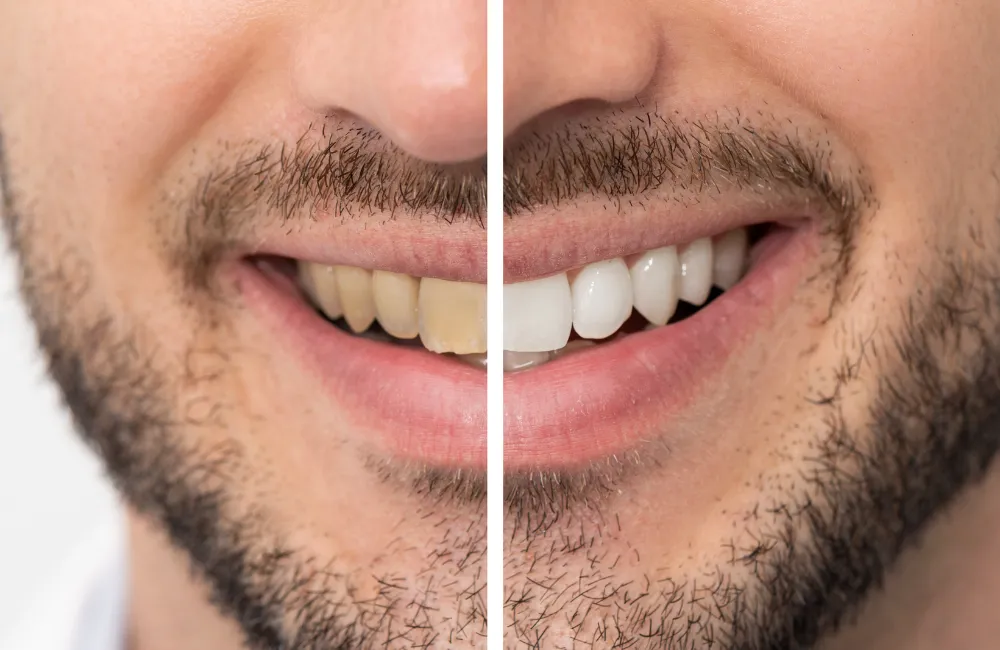
Several solutions can address uneven whitening results. For teeth with existing dental work, the dentist can recommend replacing old restorations with new ones that match the whitened shade of the natural teeth. Professional whitening treatments administered by a dentist can often achieve more consistent results than at-home methods. In some cases, multiple whitening sessions or the use of stronger bleaching agents might be necessary to improve the overall result. Veneers or bonding are another option to create a uniform appearance by covering the unevenly whitened teeth. Discussing your goals and expectations with your dentist is essential before starting any whitening treatment. This will help in choosing the most suitable method to achieve the desired aesthetic outcome and maintain a bright, consistent smile.
Conclusion
While teeth whitening can significantly enhance your smile, it is essential to be aware of the potential risks involved. Tooth sensitivity, enamel erosion, gum irritation, allergic reactions, chemical burns, and uneven whitening are all possible side effects. Understanding these risks and taking preventative measures can help you minimize them. Consulting with a dentist before undergoing any whitening treatment is crucial. They can assess your oral health, recommend the most suitable whitening method, and provide guidance on how to minimize potential risks. By taking these precautions, you can enjoy the benefits of teeth whitening while safeguarding your oral health. Always prioritize your dental health and make informed decisions about cosmetic procedures.
